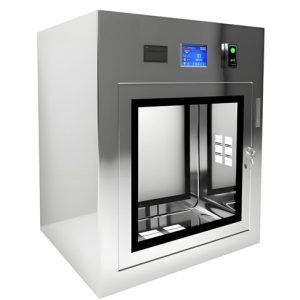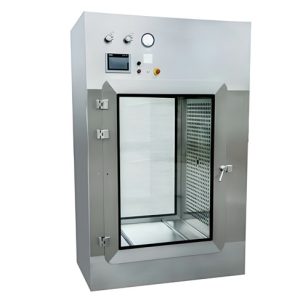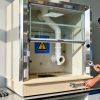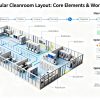Account
-
Safe payment options
We only work with the most secure payment systems.
-
Product return within 30 days
We do our very best to keep our customers happy.
No products in the cart.
You dont have any products in your cart yet, add a few products to experience this experience.
Add $500.00 to cart and get free shipping!
To see and take advantage of all discounted products.
Click HereLab Fume Hood Blower: Selection, Principle, Installation in 2025
Table of Contents
Lab Fume Hood Blower – The Heart of Ventilation System
The proper selection and installation of a lab fume hood blower is critical for laboratory safety, environmental control, and experimental success. This essential component acts as the “lungs” or “heart” of your ventilation system, responsible for extracting hazardous gases and maintaining a safe working environment. A well-designed lab fume hood blower ensures that toxic fumes, chemical vapors, and particulate matter are effectively removed from the laboratory space.
When selecting a lab fume hood blower, factors such as chemical compatibility, airflow requirements, and energy efficiency must be carefully considered. The right lab fume hood blower not only protects personnel but also preserves experimental integrity and complies with regulatory standards. At Deiiang™, our engineers specialize in designing optimal ventilation solutions with precisely matched lab fume hood blower systems for various laboratory applications.
Video: Importance of laboratory ventilation systems and the critical role of fume hood blowers
Working Principles and Key Functions
A lab fume hood blower operates on the fundamental principle of creating negative pressure to extract contaminated air from the fume hood enclosure. Through mechanical energy, the blower accelerates air movement, overcoming duct resistance to efficiently transport laboratory air to external exhaust points. The performance of your fume hood exhaust fan directly impacts the safety and effectiveness of your laboratory ventilation system.

Figure 1: Laboratory fume hood exhaust system schematic illustrating the critical role of the lab exhaust system fan
Essential Knowledge Before Selection
Understanding the different types of ventilation blowers is crucial for selecting the optimal lab fume hood blower for your specific application. Each type offers distinct advantages and limitations that affect performance, maintenance requirements, and operational costs.
1. Classification by Working Principle
Centrifugal Blower: This type of centrifugal fume hood blower uses a rotating impeller to generate centrifugal force, discharging air radially. They are ideal for applications requiring moderate airflow with high pressure, typically 0.5-2.5 kPa (2-10 in. wg). Centrifugal blowers from Deiiang™ can achieve efficiencies of up to 85% in optimized configurations.
Axial Blower: In axial blowers, air flows parallel to the shaft axis, making them suitable for high-volume, low-pressure applications (typically below 0.5 kPa). While less common for fume hood applications, they may be appropriate for specific laboratory setups with minimal duct resistance.
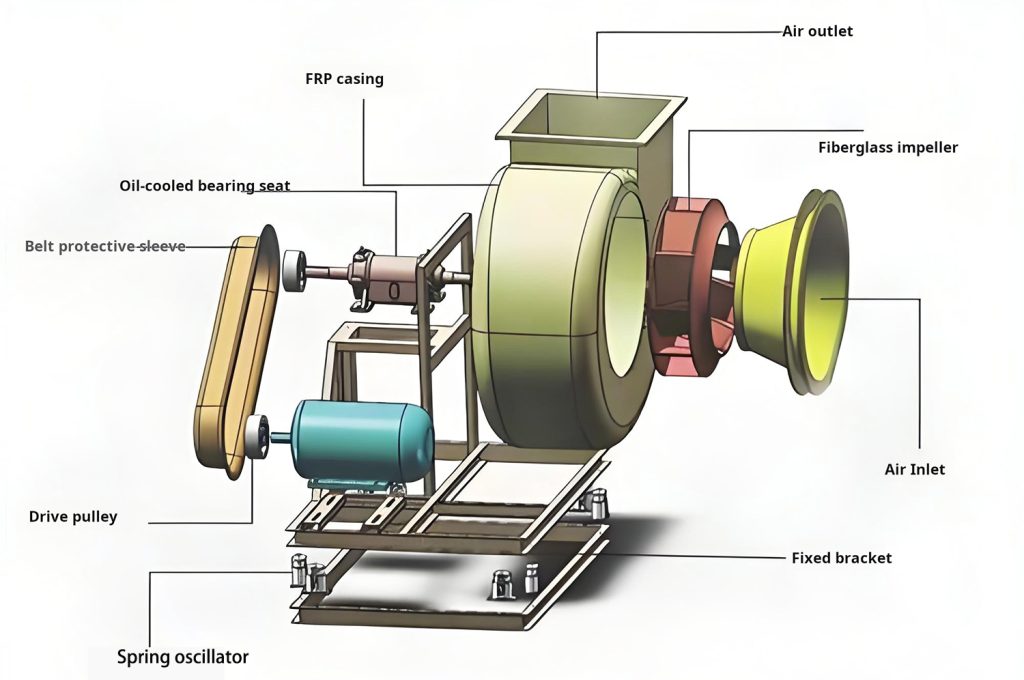
Figure 2: Structural comparison between centrifugal and axial blowers for laboratory ventilation applications
2. Classification by Drive Method
Drive mechanism selection affects maintenance requirements, efficiency, and operational flexibility of your lab fume hood blower:
- Direct Drive: Motor directly connected to the impeller, offering compact design and minimal maintenance requirements. Deiiang™ direct-drive models typically achieve 92-95% mechanical efficiency.
- Belt Drive: Uses belts to connect motor and impeller, allowing speed adjustment but requiring more maintenance. Belt-driven systems from Deiiang™ offer speed adjustment ranges of 20-100% of maximum RPM.
3. Classification by Control Method
Control methodology significantly impacts energy consumption and operational flexibility:
Constant Air Volume (CAV) Blower: Maintains fixed airflow regardless of fume hood sash position or system resistance changes. Suitable for laboratories with consistent operational requirements.
Variable Air Volume (VAV) Blower: Paired with frequency inverters, these systems adjust airflow based on actual demand, offering significant energy savings. Proper VAV fume hood blower sizing can reduce energy consumption by 40-60% compared to CAV systems in typical laboratory applications.
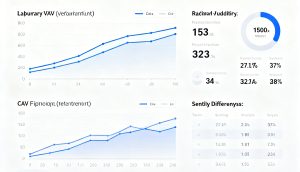
Figure 3: Energy consumption analysis showing VAV system advantages across varying operational loads
4. Classification by Material: Considerations for Corrosive Environments
Material selection is critical for chemical fume hood blower applications where exposure to corrosive substances is expected. The right material ensures longevity and prevents premature failure of your corrosion resistant fume hood blower.
Polymer-based blowers: PP and PVC resist acids at lower temperatures but lack strength. FRP delivers superior resistance and strength for highly corrosive environments, despite repair complexity.
Metal-based blowers: Stainless Steel offers strength for solvents and heat, but is costly. Coated Carbon Steel is cheaper for mild gases, yet coating damage causes corrosion.
Selection is Key: Aligning material properties—corrosion, temperature, strength—with the application ensures blower longevity and prevents premature failure.
Core Parameters and Calculations
Selecting the appropriate lab fume hood blower requires careful consideration of multiple technical parameters and precise calculations. An improperly sized blower can compromise safety or lead to excessive energy consumption.
1. Key Technical Parameters Interpretation
Understanding performance specifications is essential for selecting the best fume hood blower for laboratory applications:
- Airflow (CFM/m³/h): Volume of air moved per unit time. Standard fume hoods typically require 500-1500 CFM, while walk-in models may need 2000+ CFM.
- Static Pressure (Pa/in.wg): Resistance the blower must overcome in the duct system. Typical laboratory systems require 0.5-2.5 kPa (2-10 in.wg).
- Rotation Speed (RPM): Impeller rotational speed affecting airflow and pressure characteristics.
- Motor Power (HP/kW): Electrical power required to drive the blower. Deiiang™ blowers typically range from 1-20 HP for standard laboratory applications.
- Noise Level (dB): Sound pressure level generated during operation. Laboratory applications typically require <65 dBA at 1 meter distance.

Figure 4: Typical performance curve for a centrifugal laboratory fume hood blower
2. Blower Selection Calculation Process
Proper fume hood blower sizing involves a systematic approach to ensure optimal performance:
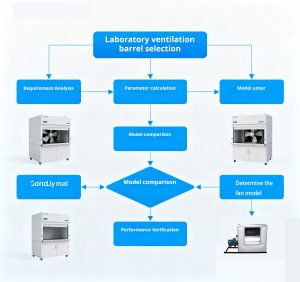
Figure 5: Systematic approach to laboratory fume hood blower selection
Example Calculation: For a standard 6-foot fume hood with a required face velocity of 100 fpm and sash opening of 4 feet:
Required Airflow = Face Area × Face Velocity
Face Area = 6 ft (width) × 4 ft (sash opening) = 24 ft²
Required Airflow = 24 ft² × 100 fpm = 2,400 CFM
Accounting for duct losses (estimated 1.2″ wg) and safety factor (15%):
Final Blower Requirement = 2,400 CFM at 1.4″ wg static pressure
3. Noise and Energy Consumption Considerations
Balancing performance with operational considerations is essential for laboratory environments:
- Low-Noise Design: Optimized impeller design, vibration isolation, and acoustic enclosures can reduce noise levels by 10-15 dBA.
- Energy Efficiency: VAV systems, high-efficiency motors (IE3/IE4 class), and properly sized components can reduce energy consumption by 30-50%.
D. Regulatory and Standards Compliance
Blower selection must comply with relevant industry standards and local regulations, including ASHRAE 110 for fume hood performance testing, AMCA standards for airflow measurement, and local environmental emission regulations.
Ensuring Optimal Performance and Safety
Proper fume hood blower installation is critical for system performance, safety, and longevity. Installation errors can lead to reduced efficiency, excessive noise, and premature component failure.
1. Installation Location and Environment
The optimal location for a lab fume hood blower is typically on the roof or in a dedicated mechanical room. Considerations include corrosion protection, weather protection (for outdoor installations), vibration isolation, and adequate access for fume hood blower maintenance.
2. Vibration and Noise Reduction Measures
Implementing proper vibration control is essential for minimizing noise transmission and preventing structural damage:
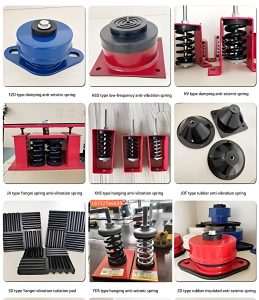
Figure 6: Vibration isolation components for laboratory fume hood blower installations
3. Duct Connection and Sealing
Proper sealing at duct connections prevents air leakage and maintains system performance. Use compatible gasketing materials and follow manufacturer specifications for joint preparation and fastening.
4. Electrical Connection and Control Systems
Electrical installations must comply with local codes and include appropriate motor protection, properly sized wiring, and correctly configured control systems for VAV applications.
Video: Demonstration of proper fume hood blower installation procedures
Extending Blower Lifespan
Regular fume hood blower maintenance is essential for ensuring long-term reliability, optimal performance, and laboratory safety. A proactive maintenance program can extend blower lifespan by 30-50% and prevent unexpected downtime.
1. Routine Inspection and Maintenance Schedule
Implementing a structured maintenance program ensures consistent performance of your lab fume hood blower:
- Monthly: Check belt tension (for belt-driven units), inspect for unusual vibrations or noises
- Quarterly: Clean impeller accumulation, check motor amperage, inspect flexible connectors
- Annually: Lubricate bearings, check alignment, perform comprehensive system performance testing
2. Common Problems and Diagnostics
Effective fume hood blower troubleshooting requires systematic diagnosis of operational issues:
| Problem Symptom | Possible Causes | Initial Solutions |
|---|---|---|
| Increased Noise | Bearing wear, impeller imbalance, duct resonance | Replace bearings, balance impeller, inspect duct supports |
| Abnormal Vibration | Impeller accumulation, bearing damage, loose mounting | Clean impeller, replace bearings, tighten mounting bolts |
| Reduced Airflow | Duct blockage, reverse rotation, motor failure, belt slippage | Clean ducts, check electrical connections, repair motor, adjust belt tension |
| Motor Overheating | Voltage fluctuation, overload, inadequate cooling | Check power supply, reduce load, clean cooling fins |
Table 2: Common fume hood blower problems, potential causes, and initial troubleshooting steps
3. Safe Operation and Protection
Always follow safety protocols during fume hood blower maintenance, including electrical lockout/tagout procedures, proper personal protective equipment, and working in accordance with manufacturer guidelines.
How to Choose a Professional Blower Supplier and Service Provider
Selecting the right supplier for your lab fume hood blower ensures product quality, technical support, and long-term reliability. Consider these factors when evaluating potential suppliers:
- Product Quality Certification: Look for AMCA, ISO, and other relevant industry certifications
- Industry Experience and Reputation: Choose suppliers with proven track records in laboratory ventilation
- Technical Support and After-Sales Service: Ensure availability of expert support for installation and fume hood blower troubleshooting
- Customization Capability: Ability to provide tailored solutions for specific laboratory requirements
- Price Competitiveness: Balance between initial cost and long-term value
At Deiiang™, we combine extensive industry experience with innovative engineering to provide the best fume hood blower for laboratory applications. Our team, led by product designer Jason.peng, delivers customized ventilation solutions backed by comprehensive technical support.
Conclusion and Call to Action
Proper selection, installation, and maintenance of your lab fume hood blower are fundamental to laboratory safety, operational efficiency, and regulatory compliance. By understanding the principles outlined in this guide and partnering with experienced professionals, you can ensure optimal performance of your ventilation system.
Whether you’re planning a new laboratory facility or upgrading existing ventilation systems, the expertise of Deiiang™ can help you navigate the complexities of fume hood blower selection, installation, and long-term maintenance.
Ready to Optimize Your Laboratory Ventilation System?
Contact Deiiang™ today for expert consultation on your lab fume hood blower requirements:




